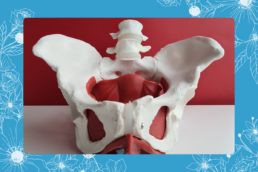Pelvis vs. Cervix: Understanding the Anatomy and Function
The human body is a marvel of intricate design and function, with each part playing a vital role in maintaining overall health. Two crucial components in the female reproductive system are the pelvis and the cervix.
While both are essential, they serve distinct purposes and have unique anatomical features. Understanding the differences between the pelvis and the cervix is fundamental for comprehending female reproductive health and addressing related medical concerns.
The Pelvis
The pelvis is a bony structure located at the base of the spine, connecting the trunk and the legs. It consists of several bones, including the ilium, ischium, pubis, and sacrum, which are fused together to form a sturdy ring. The pelvis provides support for the spinal column and upper body, acting as a foundation for movement and stability.
Primary Functions
One of the primary functions of the pelvis is to bear the weight of the upper body when sitting and standing. It also plays a critical role in locomotion, facilitating movements such as walking, running, and bending. In addition, the pelvis houses and protects several vital organs, including parts of the digestive and urinary systems.
In females, the pelvis is particularly significant due to its role in childbirth. The pelvic bones form a birth canal through which a baby passes during delivery. The size and shape of the female pelvis are adapted to accommodate this process, with a wider and more circular structure compared to the male pelvis. The pelvic floor muscles, a group of muscles within the pelvic region, also support the bladder, intestines, and uterus, contributing to functions such as urination, bowel movements, and sexual intercourse.
The Cervix
The cervix is a cylindrical structure that forms the lower part of the uterus, extending into the vaginal canal. It is approximately 2-3 centimeters in length and has a small opening called the cervical os, which connects the uterus to the vagina. The cervix is composed of strong, fibrous tissue and smooth muscle, providing both support and flexibility.
Primary Functions
One of the cervix’s primary functions is to act as a gateway between the uterus and the vagina. It allows the passage of menstrual blood from the uterus during menstruation and facilitates the entry of sperm into the uterus during fertilization. The cervix also plays a crucial role during pregnancy and childbirth. It remains tightly closed to protect the developing fetus and gradually dilates during labor to allow the baby to pass through the birth canal.
The cervix also has important immunological functions. It produces mucus that changes in consistency throughout the menstrual cycle, creating a barrier to pathogens and aiding in sperm transport. During ovulation, the cervical mucus becomes thinner and more alkaline, facilitating sperm movement and enhancing the chances of fertilization.
Key Differences and Clinical Implications
While both the pelvis and cervix are integral to female reproductive health, they differ significantly in structure and function. The pelvis is a large, supportive bony structure, whereas the cervix is a small, flexible passageway. The pelvis’s primary roles include support, protection, and facilitation of movement, while the cervix primarily functions as a gateway and protective barrier in the reproductive system.
Understanding these differences is crucial for diagnosing and treating various medical conditions. For instance, pelvic fractures can impact mobility and organ function, requiring orthopedic intervention. In contrast, cervical conditions such as cervical cancer or cervical insufficiency necessitate gynecological expertise and specific treatments.
Key Takeaways
The pelvis and cervix, though distinct in their anatomy and functions, are both vital to female reproductive health. Their roles in support, protection, movement, and reproduction underscore the complexity and interdependence of the human body’s systems. Comprehensive knowledge of these structures aids in better medical care and enhances our appreciation of the body’s remarkable capabilities.

